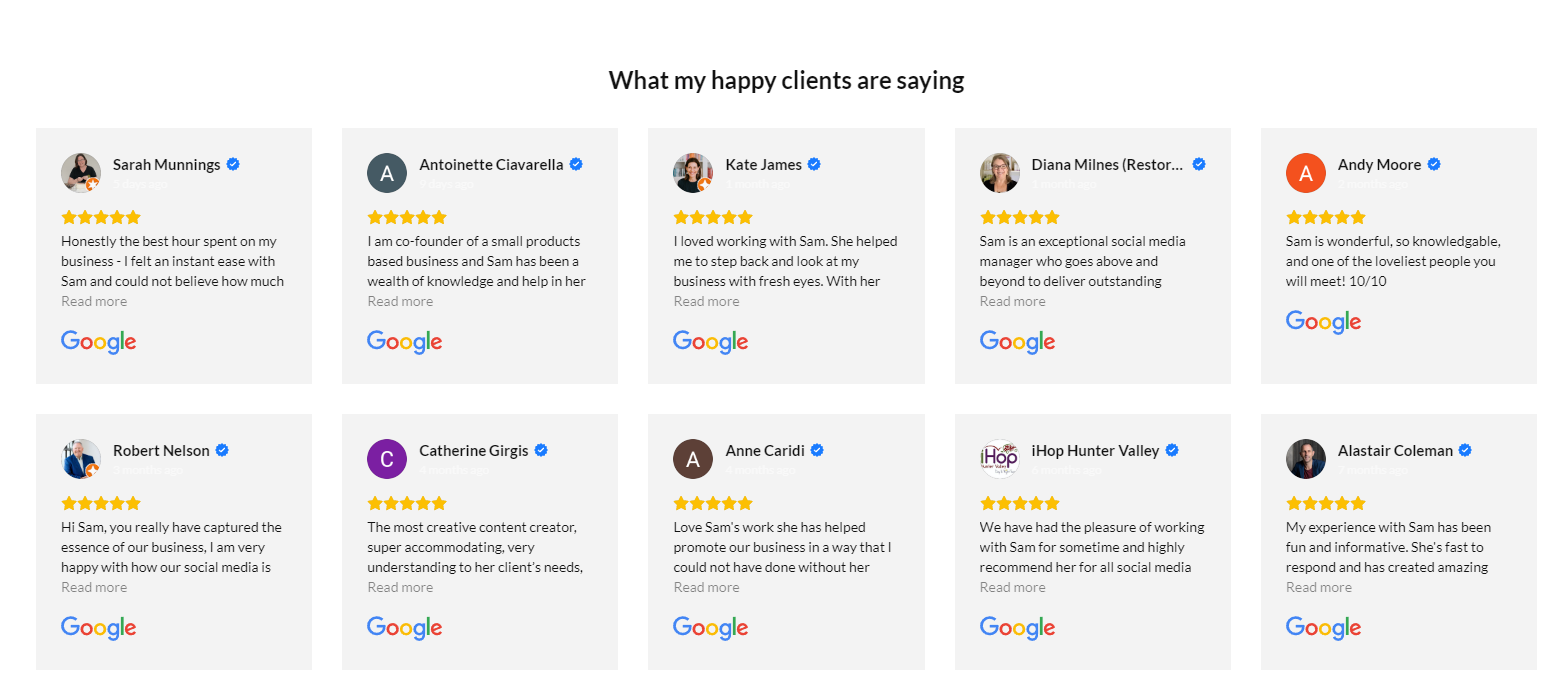How to ‘Social Proof’ Your Website
Social proof is based on the idea that people are more likely to take action if they see others doing the same thing. It uses the words or actions of your customers to add credibility, trust & authority to a brand.
Depending on the product or service, there are several different ways you can ‘social proof’ your website.
Reviews, testimonials & endorsements
Reviews & endorsements are the most well-known and valuable pieces of social proof.
A review is any customer’s testimonial where as an endorsement is a testimonial from someone special, someone known to and trusted by your audience.
If a well-known business endorses your service and someone lands on your site and recognizes this business, they will be more likely to approach your products and services with trust.
These endorsements & reviews are organic, non-paid, not to be confused with influencer marketing, which are paid.
Reviews & endorsements are most effective when strategically showcased throughout your website:
Banners dividing long pages – best to include a review that relates to the topic on that page. Include a photo or logo if possible.
Carousel – on home page showcasing a selection of reviews. (best to have this move automatically so visitors can see there is more then one)
Embed Google Review Widget – one of the best and most authentic way to showcase your reviews.
Video Testimonials – keep them short and personal.
TIP: Avoid making a testimonials page as visitor usually skip them. Instead, make every page a testimonials page
Awards, Memberships & Accreditation
Showcasing your awards wins Along with certifications and membership logos help with building trust as these visuals are “trust seals” builds credibility and sets your business apart.
Certification logos are also big trust signals. For example, Master Builder for builder in Australia, NDIS logo for a NDIS provider.
Where to showcase?
Home or about pages as a logo wall
Footer – for important certifications
Awards page – for the lucky ones with a few awards!
Client logos
Showcase company names and logos, particularly from recognizable and well-respected brands. Even if the visitor doesn’t recognize all of the companies, it’s differentiation. It’s visual evidence of legitimacy and is very common on B2B service websites
This can be displayed as a ‘logo wall’ on your home or about page with the words “trusted by” rather than “our clients.” It reminds your visitor that these clients don’t just work with you, they trust you.
Case studies
A good case study will demonstrate how you solved customer’s problem with the services you offer, highlights the results and endorsement from the customer.
Even if you are not able to share details on a specific customer, mention the industry – it will help others from the same industry understand how you can help them too.
See more about case studies in this blog post.
Social Media presence & User Generated Content (UGC)
Ask your audience to post a photo or video using a specific hashtag – this is the easiest way to generate user generated content. You can then showcase the live #hashtag feed on your website.
Promote your social media channels on your website and include a live feed if you can as Aa high number of social media followers makes you look legit and adds to trust.
If a site visitor heads to your Instagram or LinkedIn pages, they can see connections who also follow you and this adds to trust and now they will also follow you / connect with you.
Press & Media
Saying you have been featured in a recognizable publication adds legitimacy to your brand. If a media organisations took the time to cover your story, then it means you’re worth paying attention to.
Showcase media with:
Articles – about you or your business or guest articles you wrote.
Videos (TV, Media)
Guest podcast you appeared in.












